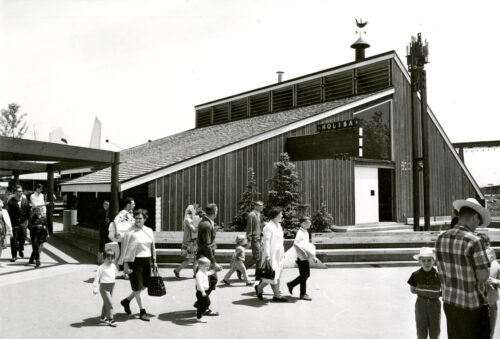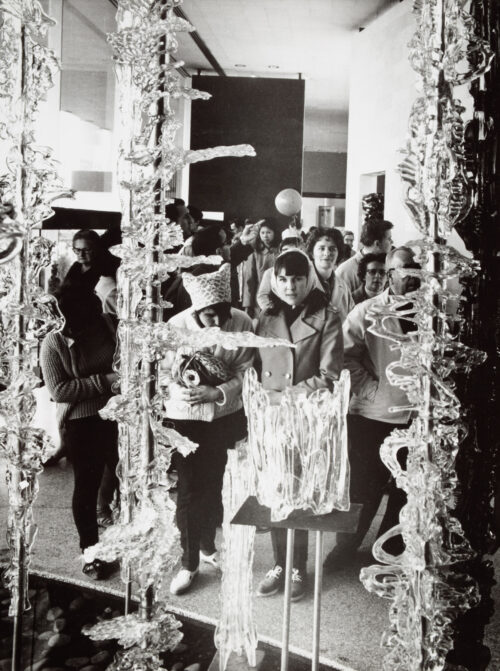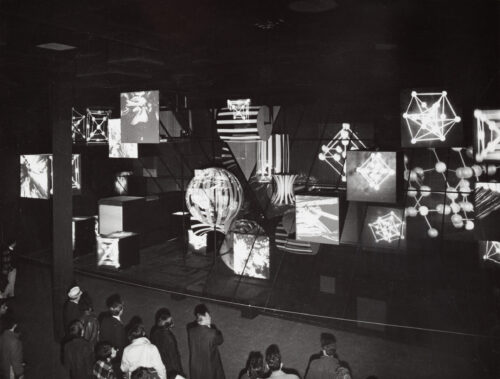Czechoslovak pavilion at Expo 67, Montreal
The Czechoslovak pavilion at Expo 67 was notable for its audiovisual innovations featured in a ‘black box’ on the first floor. The exhibition design was conceived by the experienced trio of František Cubr (1911–76), Josef Hrubý (1906–88), and Zdeněk Pokorný (1909–84) with a team of collaborating creators. An essential component of the presentation was Czech glass, whether in the form of monumental free forms or as small design products, which were primarily installed on the ground floor. A highlight was the spectacular textile exhibition ‘Inspiration’ by Antonín Kybal (1901–71).
The first floor was dedicated to panoramic exhibitions, with two multimedia environments designed by Josef Svoboda (1920–2002): ‘Diapolyekrán’ and ‘Polyvision’. Telling the story of Creation, ‘Diapolyekrán’ was a kinetic installation consisting of 112 rotating cubical screens onto which some 30,000 photos were cast by synchronized slide projectors. Meanwhile, ‘Polyvision’ was a spatial installation presenting a ten-minute programme on Czechoslovak industry, with slides and films projected onto three-dimensional mobile objects and combined with music to form different audio-visual compositions. The pavilion also featured the world’s first interactive film, Radúz Činčera’s ‘Kinoautomat: One Man and His House’, where the audience could influence the course of the plot by means of buttons. The film was shot in the Hotel House in Prague’s Invalidovna district.
The Bratislava restaurant by architects Ferdinand Milučký (1929–2019) and Vojtech Vilhan (1926–88) was also worth mentioning, as was the free-standing Chalet restaurant by architects Vojtech Vilhan and Stanislav Talaš (1932–2004). Both restaurants featured an intriguing synthesis of modern architecture with elements of Slovak folk art.
Countries: Czech Republic
Tags: Architecture, Arts and Crafts, Material, Media




